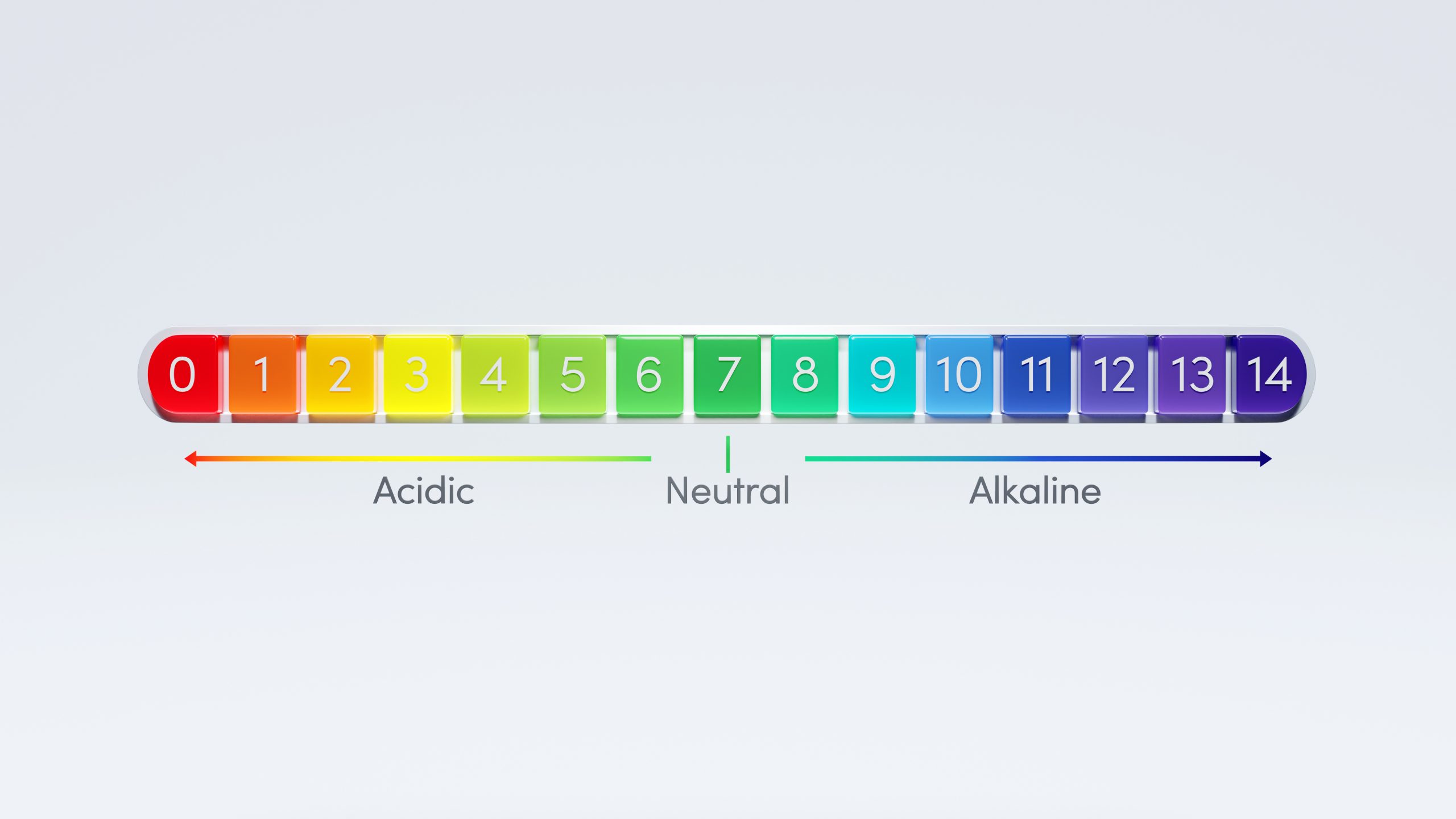Many people are surprised to learn that pH level has a direct impact on vaginal health. While it sounds pretty scientific, vaginal pH is totally natural and, for the most part, is maintained on its own. However, it’s important to understand how pH plays into vaginal health and what you can do to help support healthy pH levels.
What Is Vaginal pH?
You probably first learned about pH in chemistry class. If you don’t remember too much about it, here’s a quick refresher. A pH level is a scale of 0 to 14 that indicates how alkaline or acidic something is. Lower numbers are more acidic, while higher numbers are more alkaline; the number 7, which falls in the middle of the scale, indicates a neutral pH level.
So, how does this have anything to do with your vagina? As it turns out, the vagina has its own pH level. For a healthy vagina, the pH level typically measures between 3.8 and 4.5, meaning that it is slightly acidic. This number can vary slightly depending on certain factors, such as age, medications, sexual activity, and menstrual cycles.
How Do pH Levels Affect Vaginal Health?
A healthy pH level helps to protect your vagina’s balance of naturally occurring bacteria, also known as the vaginal biome. A disruption to the vagina’s natural bacteria levels can allow harmful microorganisms to flourish. If the acidity level drops, the vaginal biome becomes more susceptible to infections and other vaginal issues, including:
- Bacterial vaginosis (BV), a condition in which bacterial overgrowth upsets the natural balance of bacteria in the vagina. Symptoms include vaginal itching, a burning feeling when urinating, and a thin white or gray vaginal discharge.
- Trichomoniasis (trich), a sexually transmitted infections (STI) caused by a parasite called Trichomonas vaginalis. It often produces no symptoms, but it can increase the risk of contracting other STIs.
- Yeast infection, a fungal infection caused by an overgrowth of candida. Symptoms may include vaginal itching or pain, burning while urinating or during sex, redness and swelling of the vulva, and a thick, white vaginal discharge.
How to Tell if Vaginal pH Is Unbalanced
When the vaginal biome is disrupted, the shift may not always be obvious. In order to tell when something is off with your vagina’s bacterial balance, look for the following signs and symptoms:
- Odor: Some vaginal odor is natural, but unbalanced vaginal pH may produce a foul or “fishy” smell.
- Discharge: You should also look for any changes in your vaginal discharge, including discharge that is gray or yellow in color or thicker in consistency.
- Discomfort: If you feel any itchiness or irritation starting to develop around the vulva or vagina, it could be a sign of unbalanced pH. Other symptoms may include vaginal pain, swelling of the vulva, or a burning sensation when you have sex or urinate.
You should visit an OB/GYN regularly to help ensure that your vaginal pH levels are healthy and to detect any issues before they become more serious. However, if you experience any of the symptoms described above, make an appointment between your scheduled visits. Your doctor can help determine the cause of your symptoms and help you get your vaginal pH back on track.
Tips for Maintaining Healthy Vaginal pH Levels
While the vagina does most of the work in balancing its own biome, there are a number of simple things you can do on a regular basis to help support this natural function, such as:
- Use condoms. Semen has a high pH level, so using a barrier during sex will help prevent it from disrupting your vaginal pH.
- Avoid douching. The vagina naturally cleans itself, and douches can potentially eliminate healthy bacteria needed for protection. You can wash the vulva area with warm water and mild soap, but don’t put any cleansing solutions inside the vagina.
- Wear cotton underwear. Natural fabrics, such as cotton, are preferred for their breathability and moisture-wicking properties. This helps to prevent unwanted bacterial growth near the vagina.
- Take probiotics. Probiotics help to support natural bacteria levels in the vagina. Choose a supplement like Pro-Fem which uses clinically proven probiotic strains specifically developed for vaginal health.
Vaginal pH may be something that you can’t physically see, but it has a direct impact on your overall health. Take steps to protect your vaginal health and avoid uncomfortable symptoms and harmful infections.
